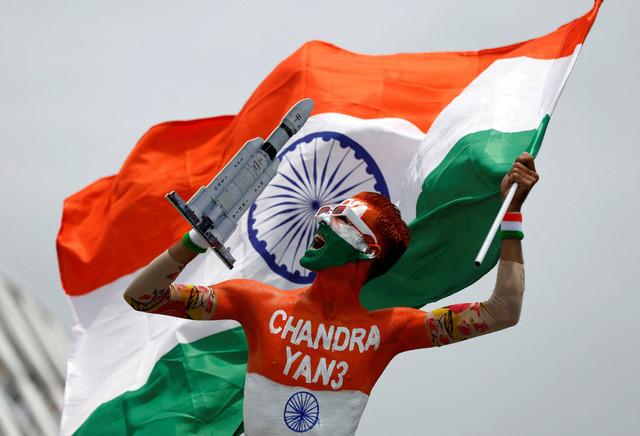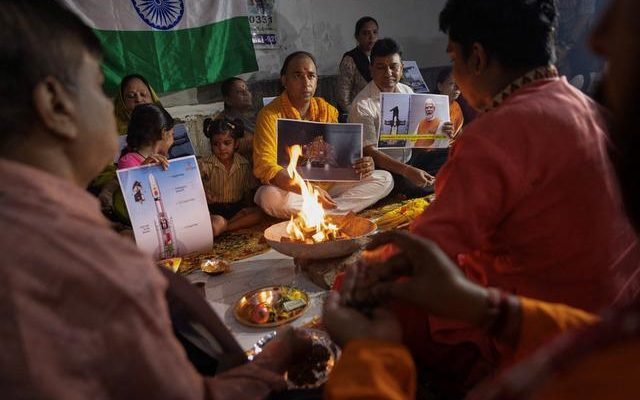India is preparing to make a history in space studies with its mission called Chandrayaan-3. If this mission, which is planned to land on the southern part of the Moon, which is the least explored region, is successful, India will be the first country to land on the south of the Moon.
MAIN GOAL: GLACIAL DISCOVERY
One of its main goals is to discover water-based ice, which scientists say could support human settlement on the Moon in the future.
India’s attempt comes a few days after the Russian Luna-25 crashed while trying to land in the same area.
If successful, it will be the fourth country to make a soft landing on the Moon; The United States, the Soviet Union, and China all landed near the equator line.
India’s attempt to land the Chandrayaan-2 mission near the south pole in 2019 failed and it crashed onto the Moon’s surface. All eyes are now on Chandrayaan-3. The spacecraft took off from Sriharikota Space Center in southern India on July 14.
The landing craft, named Vikram in memory of Vikram Sarabhai, the founder of the Indian Space Research Organization (Isro), carries a 26 kg rover named Pragyaan, which means wisdom in Sanskrit.

MILLIONS ON THE SCREEN!
The voyage to the moon caused great excitement in India, and wishes for the success of the mission poured in from across the country. Isro announced that the landing will be broadcast live, and millions of people, including schoolchildren, are expected to watch the broadcast. Isro Director Sreedhara Panicker Somanath said he is confident the Chandrayaan-3 will make a successful soft landing.
He said that they carefully examined the data obtained from the Chandrayaan-2 accident and carried out simulation studies to eliminate the problems.
Over the past few days, the Vikram lander’s camera has produced a comprehensive map of the lunar surface to find a safe landing spot. In its update on Tuesday, Isro said that the systems are undergoing regular checks and that the smooth running continues.

Somanath said Chandrayaan-3 builds on the success of India’s previous Moon missions and will help make some “very important” scientific discoveries.
Chandrayaan-1, the country’s first lunar mission in 2008, discovered the presence of water molecules on the very dry lunar surface and determined that the Moon has an atmosphere during the day.
Despite failing in a soft landing, Chandrayaan-2 did not remain fully operational. The vehicle continues to orbit the Moon even today and will help the Vikram lander send images and data to Earth for analysis.
The lander and rover carry five scientific instruments that will help explore “the physical properties of the lunar surface, its near-surface atmosphere, and tectonic activity to study what’s going on below the surface.”
On Wednesday, scientists will use a complex series of maneuvers by gradually reducing the lander’s speed to make it soft landing in an area that astronomers describe as “uneven, full of craters and rocks.”
Once it lands, the six-wheeled rover will begin to move around, navigating around rocks and craters on the Moon’s surface, collecting important data and images to be sent.

